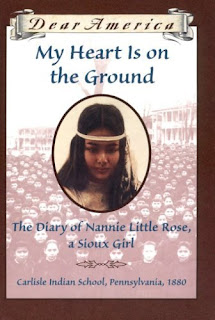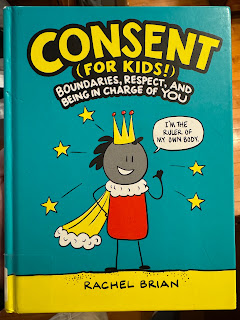Historical Fiction

Historical fiction has never been my preferred genre. I generally find the concept of creating fictional stories around real events to be in poor taste. However, I admit that while this can be the case, it is not always. Historical fiction differs from contemporary realistic fiction by setting the events of the story in a real time period in the past, centered around the experiences of people who were around during that time. Many stories can be presented in a way that is respectful to the lived experiences of those from our past, but this requires a deft hand at writing and loads of research to make sure information is not being presented that is inaccurate. Many children end up reading historical fiction and learning about history through it. As such, it is important that the majority of the information being presented by the author is done in a way that is respectful and accurate. Rinaldi, Ann. My Heart is On the Ground: The Diary of Nannie Little Rose, a Sioux Girl. Scho...

